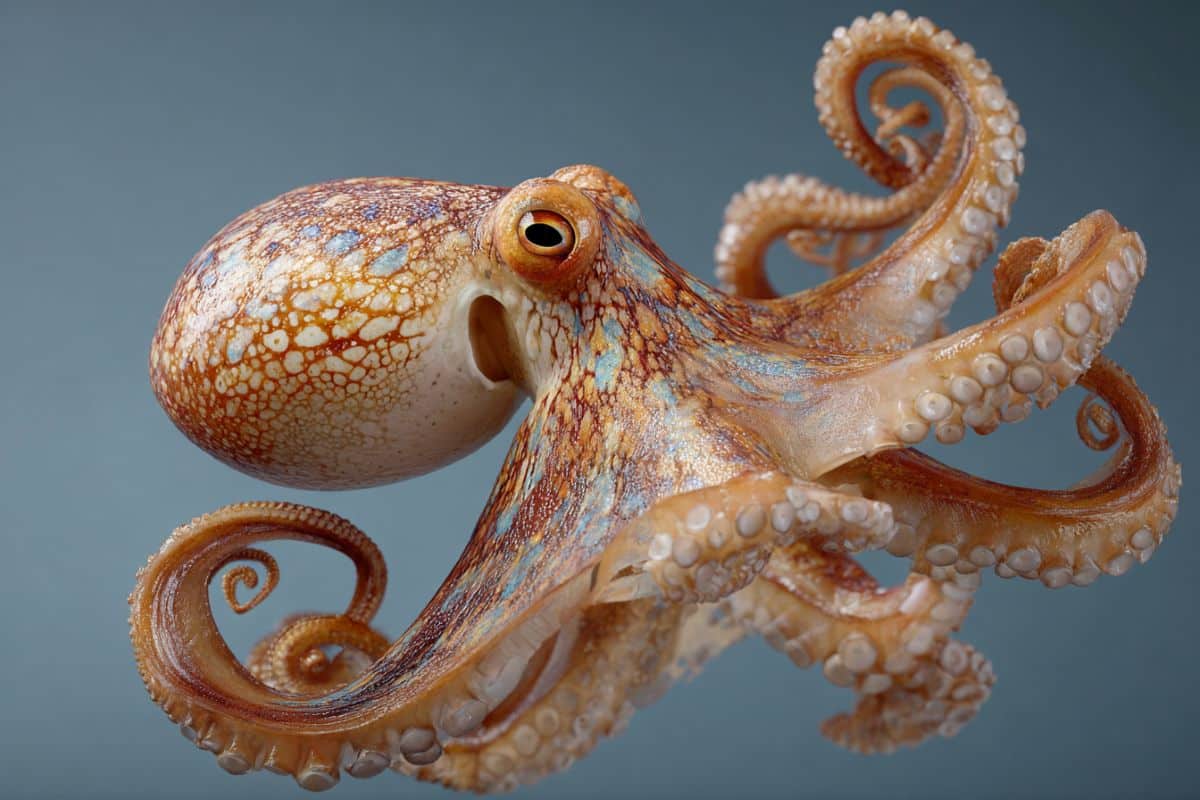Summary: Researchers have compiled the first complete catalog of octopus arm movements from 25 wild octopuses filmed in their natural habitats. The study revealed 12 types of arm motions, including elongation, shortening, bending, and probing, with specific regions of the arm specialized for certain actions.
Each arm, armed with about 100 chemo-tactile suckers, can execute both fine manipulations and powerful movements. These findings are inspiring robotics designs for flexible, sensor-rich appendages capable of lifesaving tasks in disaster and underwater environments.
Key Facts
- 12 Movements: Researchers documented 12 distinct types of octopus arm motions.
- Arm Specialization: Different arm regions favor specific actions, like bending at the tip.
- Robotics Potential: Findings could guide soft-robotic designs for rescue and medical use.
Source: Marine Biological Laboratory
Octopus arms are one of the most flexible structures known in all of the biological world.
Their agility is so extraordinary that robotics researchers want to learn the secrets behind their movements, hoping to apply some of the same principles. They envision soft, flexible robotic appendages that, like the highly tactile octopus arms, can search and carry out tasks through tight and narrow openings, such as delivering life-saving food and water to people trapped in the rubble of collapsed buildings.

Now, researchers from the Marine Biological Laboratory (MBL) in Woods Hole and Florida Atlantic University (FAU) have published the most detailed study ever of the complex motions of octopus arms. They videorecorded 25 octopuses in their natural habitats, in six different locations in the Atlantic, Caribbean, and in Spain, and developed a systematic catalog of their range of arm movements as related to behaviors, such as foraging and locomotion.
The findings are reported this week in the journal Nature Scientific Reports
“I’ve been trying for a long time to work out the natural behavior of cephalopods in their natural habitat,” said MBL Senior Scientist Roger Hanlon, in whose lab the new study was conducted. This study represents the first full ethogram, or detailed catalog, of octopus arm behaviors in the wild, and builds on earlier work by Hanlon’s team that studied octopus arm movements in tanks in his lab.
“Studying and recording octopus behavior from wild octopuses in the field gave us the opportunity to analyze a larger behavioral repertoire and further understand how they use their arms to achieve such complex behaviors,” said FAU research fellow and first author Chelsea Bennice.
Octopus gardens
Octopus behavior is guided much more by sensory organs in their arm suckers than by eyesight, Hanlon said. “The octopus is a very tactile animal – it’s more tactile than visual.”
They are also extremely good at camouflage, dynamically changing their skin color and texture to blend in with their environment. So, just finding them in the first place, in order to record their behavior, was a real challenge.
For the most part, team divers Hanlon and Bennice would find the animal’s habitat first (octopuses are messy eaters and often leave food debris around their hidey-holes). Then they would wait for the octopus to return and monitor its activity during the following days. Octopuses spend about 80 percent of their time in their dens, only emerging once or twice a day to forage for food.
“I’m a strong believer that you have to get into the natural world, and especially the sensory world, of whatever animal you study,” Hanlon said – and he’s been diving to study octopuses for over 25 years.
The six octopus habitats in this study varied from smooth, sandy seafloor to highly complex coral reef environments.
“The fieldwork is very arduous, and it takes a lot of luck to get valid natural behaviors,” Hanlon said.
Breaking it down
The team went through its field footage second-by-second to catalog not only every motion of each of the 25 octopuses’ eight arms, but to divide each arm into three sections and document those movements separately.
Study co-author Kendra Buresch of MBL says this is the first time the full range of 12 different types of octopus arm movements has been catalogued.
“These are the actions that make up the whole complex of octopus behaviors,” she said.
Among the new findings is that, while all parts of the octopus arm are capable of a full range of different motions, some happen more in one arm part than another. Elongation and shortening motions occur mostly at the arm’s base, for example, while bending occurs mostly at the tip.
The arms can perform a variety of tasks, from locomotion – “walking” across the seafloor or swimming above it – to probing reef crannies in search of prey, to manipulating objects.
In addition to their extreme flexibility, each arm has ~100 suckers that contain highly sensitive sensory organs.
“Each sucker is a chemo-tactile genius,” Hanlon says, “the equivalent of the human nose, lips and tongue all wrapped into one.”
The research was partly funded by the U.S. Office of Naval Research, which hopes to develop robotic arms that have both great flexibility and sensory capabilities.
After a submersible or a building collapses, “How do you deliver a drug or a phone or water to someone who’s down there?” Hanlon said. “You need some snaky little arm with high flexibility that can not only get down there, but can do something useful when it arrives.”
About this robotics and neuroscience research news
Author: Diana Kenney
Source: Marine Biological Laboratory
Contact: Diana Kenney – Marine Biological Laboratory
Image: The image is credited to Neuroscience News
Original Research: Open access.
“Octopus arm flexibility facilitates complex behaviors in diverse natural environments” by Roger Hanlon, et al. Scientific Reports
Abstract
Octopus arm flexibility facilitates complex behaviors in diverse natural environments
Octopus arms are among the most flexible of biological structures, yet the full range of arm flexibility has not been investigated in detail, for example in varied benthic marine habitats where structural complexity far exceeds that of lab trials.
This field study quantified arm flexibility with a hierarchical analysis of octopus behaviors, arm actions, and arm deformations used throughout diverse natural habitats. Twenty-five videos of naturally behaving octopuses were analyzed from 5 Caribbean sites and 1 site in Spain.
Octopus behaviors were delineated into 12 arm actions, consisting of 4 possible arm deformations (shorten, elongate, bend, or torsion). Overall, 3,907 arm action occurrences demonstrated that all arms could execute each action.
Anterior arms performed more actions than posterior arms, while there were no differences between left and right arms. Furthermore, 6,871 arm deformation occurrences indicated that all 4 arm deformations were used across all actions; however, the frequencies of these deformations varied by arm region (proximal, medial, distal).
The combination of deformations and arm actions implemented to achieve complex behaviors illustrates extreme arm flexibility and coordination during a wide range of arm functions.
Such demonstrations of flexibility may help inform ethologists, sensory ecologists, neuroscientists, and engineers designing soft robotic appendages.






